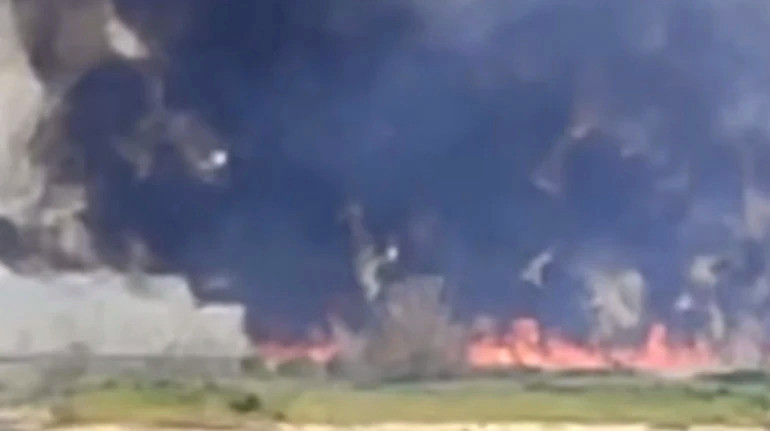At the bottom of the Kakhovka Reservoir, which dried up after the Russian destruction of the hydroelectric power station in 2023, wildfires frequently occur. These fires devastate the potential for local ecosystem recovery.
The Southern District State Ecological Inspection has released footage of another significant blaze.
Experts say that the terrorist attack on the Kakhovka HPP resulted in water loss in the reservoir and disrupted the natural balance. Consequently, fires frequently ignite in the dry areas.
According to the State Ecological Inspection, the fires appear suddenly but spread rapidly, leaving scorched earth behind.
"The remnants of reeds, dry vegetation, and shrubs are burning - the very elements that could have formed the basis for ecosystem restoration. Wildlife is dying, and habitats for birds and reptiles are being destroyed. Smoke contaminates the air, and rescue teams operate under challenging and dangerous conditions," they noted.
Experts urged locals not to create conditions for fire outbreaks and to call firefighters at 101 in case of fire detection.
"Do not complicate an already difficult situation [...] If you see a fire or its aftermath - document and report it. Every signal is important," stressed the State Ecological Inspection.
It is worth recalling that Russians blew up the Kakhovka HPP in June 2023. As a result of the attack, the station was entirely destroyed, leading to a sharp and uncontrolled drop in water levels in the reservoir.
In the Ukrainian-controlled territory of Kherson region, 31 people died due to the destruction. According to media reports, the Russian occupation administration deliberately concealed the number of flood victims from the terrorist act - in Oleshky alone, at least a hundred people died.
As of early 2025, the damage due to the HPP explosion has reached approximately 14 billion dollars.
Ukrhydroenergo has stated that they are ready to begin the restoration of the Kakhovka HPP dam at any moment after the war ends. They have developed a 3D model and planned preparatory works, communications, and the construction of a temporary dam.
